Simon Razniewski
Mining the Mind: What 100M Beliefs Reveal About Frontier LLM Knowledge
Oct 08, 2025Abstract:LLMs are remarkable artifacts that have revolutionized a range of NLP and AI tasks. A significant contributor is their factual knowledge, which, to date, remains poorly understood, and is usually analyzed from biased samples. In this paper, we take a deep tour into the factual knowledge (or beliefs) of a frontier LLM, based on GPTKB v1.5 (Hu et al., 2025a), a recursively elicited set of 100 million beliefs of one of the strongest currently available frontier LLMs, GPT-4.1. We find that the models' factual knowledge differs quite significantly from established knowledge bases, and that its accuracy is significantly lower than indicated by previous benchmarks. We also find that inconsistency, ambiguity and hallucinations are major issues, shedding light on future research opportunities concerning factual LLM knowledge.
PEDANTIC: A Dataset for the Automatic Examination of Definiteness in Patent Claims
May 28, 2025Abstract:Patent claims define the scope of protection for an invention. If there are ambiguities in a claim, it is rejected by the patent office. In the US, this is referred to as indefiniteness (35 U.S.C {\S} 112(b)) and is among the most frequent reasons for patent application rejection. The development of automatic methods for patent definiteness examination has the potential to make patent drafting and examination more efficient, but no annotated dataset has been published to date. We introduce PEDANTIC (Patent Definiteness Examination Corpus), a novel dataset of 14k US patent claims from patent applications relating to Natural Language Processing (NLP), annotated with reasons for indefiniteness. We construct PEDANTIC using a fully automatic pipeline that retrieves office action documents from the USPTO and uses Large Language Models (LLMs) to extract the reasons for indefiniteness. A human validation study confirms the pipeline's accuracy in generating high-quality annotations. To gain insight beyond binary classification metrics, we implement an LLM-as-Judge evaluation that compares the free-form reasoning of every model-cited reason with every examiner-cited reason. We show that LLM agents based on Qwen 2.5 32B and 72B struggle to outperform logistic regression baselines on definiteness prediction, even though they often correctly identify the underlying reasons. PEDANTIC provides a valuable resource for patent AI researchers, enabling the development of advanced examination models. We will publicly release the dataset and code.
GPTKB: Building Very Large Knowledge Bases from Language Models
Nov 07, 2024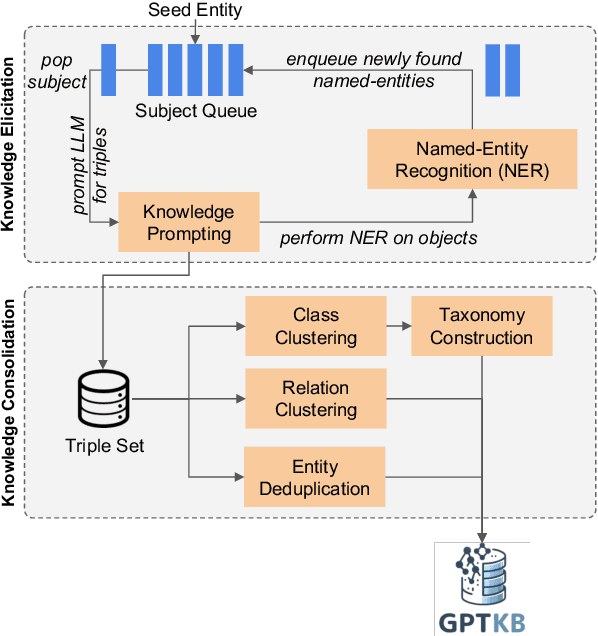
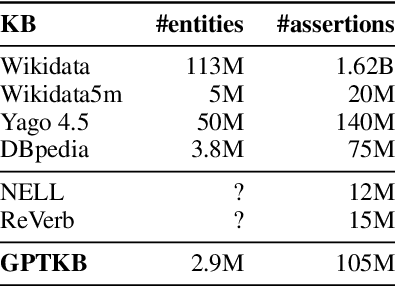
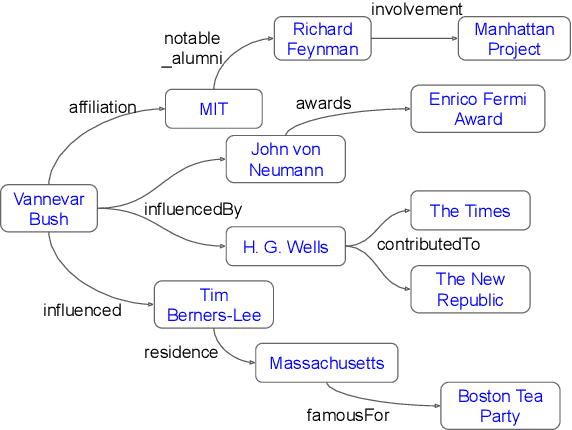
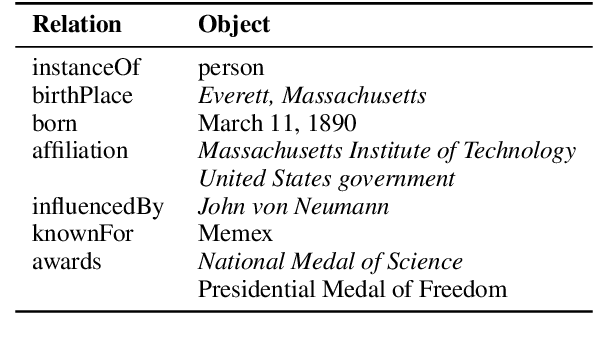
Abstract:General-domain knowledge bases (KB), in particular the "big three" -- Wikidata, Yago and DBpedia -- are the backbone of many intelligent applications. While these three have seen steady development, comprehensive KB construction at large has seen few fresh attempts. In this work, we propose to build a large general-domain KB entirely from a large language model (LLM). We demonstrate the feasibility of large-scale KB construction from LLMs, while highlighting specific challenges arising around entity recognition, entity and property canonicalization, and taxonomy construction. As a prototype, we use GPT-4o-mini to construct GPTKB, which contains 105 million triples for more than 2.9 million entities, at a cost 100x less than previous KBC projects. Our work is a landmark for two fields: For NLP, for the first time, it provides \textit{constructive} insights into the knowledge (or beliefs) of LLMs. For the Semantic Web, it shows novel ways forward for the long-standing challenge of general-domain KB construction. GPTKB is accessible at https://gptkb.org.
QUITE: Quantifying Uncertainty in Natural Language Text in Bayesian Reasoning Scenarios
Oct 14, 2024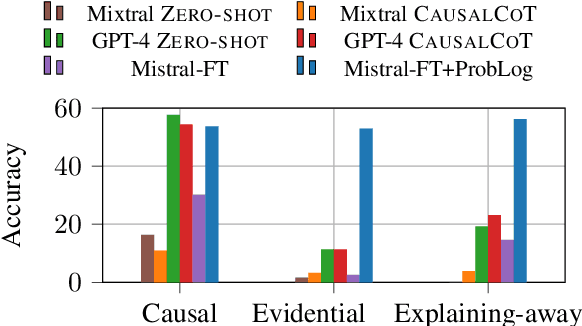
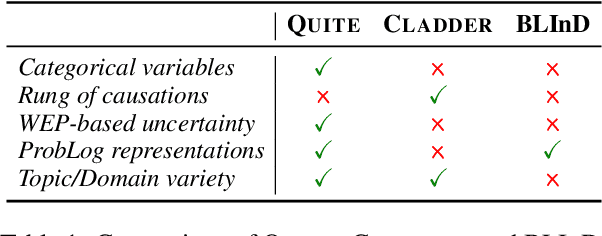
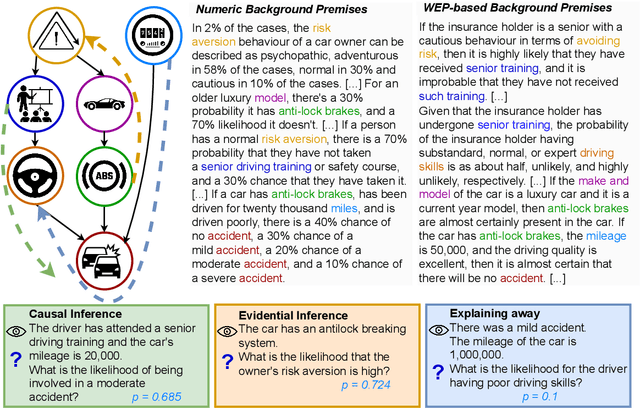
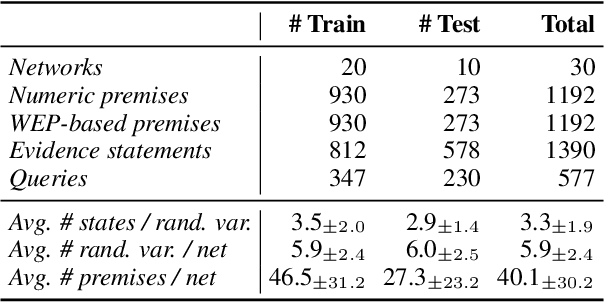
Abstract:Reasoning is key to many decision making processes. It requires consolidating a set of rule-like premises that are often associated with degrees of uncertainty and observations to draw conclusions. In this work, we address both the case where premises are specified as numeric probabilistic rules and situations in which humans state their estimates using words expressing degrees of certainty. Existing probabilistic reasoning datasets simplify the task, e.g., by requiring the model to only rank textual alternatives, by including only binary random variables, or by making use of a limited set of templates that result in less varied text. In this work, we present QUITE, a question answering dataset of real-world Bayesian reasoning scenarios with categorical random variables and complex relationships. QUITE provides high-quality natural language verbalizations of premises together with evidence statements and expects the answer to a question in the form of an estimated probability. We conduct an extensive set of experiments, finding that logic-based models outperform out-of-the-box large language models on all reasoning types (causal, evidential, and explaining-away). Our results provide evidence that neuro-symbolic models are a promising direction for improving complex reasoning. We release QUITE and code for training and experiments on Github.
Pap2Pat: Towards Automated Paper-to-Patent Drafting using Chunk-based Outline-guided Generation
Oct 09, 2024



Abstract:The patent domain is gaining attention in natural language processing research, offering practical applications in streamlining the patenting process and providing challenging benchmarks for large language models (LLMs). However, the generation of the description sections of patents, which constitute more than 90% of the patent document, has not been studied to date. We address this gap by introducing the task of outline-guided paper-to-patent generation, where an academic paper provides the technical specification of the invention and an outline conveys the desired patent structure. We present PAP2PAT, a new challenging benchmark of 1.8k patent-paper pairs with document outlines, collected using heuristics that reflect typical research lab practices. Our experiments with current open-weight LLMs and outline-guided chunk-based generation show that they can effectively use information from the paper but struggle with repetitions, likely due to the inherent repetitiveness of patent language. We release our data and code.
Recall Them All: Retrieval-Augmented Language Models for Long Object List Extraction from Long Documents
May 04, 2024Abstract:Methods for relation extraction from text mostly focus on high precision, at the cost of limited recall. High recall is crucial, though, to populate long lists of object entities that stand in a specific relation with a given subject. Cues for relevant objects can be spread across many passages in long texts. This poses the challenge of extracting long lists from long texts. We present the L3X method which tackles the problem in two stages: (1) recall-oriented generation using a large language model (LLM) with judicious techniques for retrieval augmentation, and (2) precision-oriented scrutinization to validate or prune candidates. Our L3X method outperforms LLM-only generations by a substantial margin.
Multi-Cultural Commonsense Knowledge Distillation
Feb 16, 2024Abstract:Despite recent progress, large language models (LLMs) still face the challenge of appropriately reacting to the intricacies of social and cultural conventions. This paper presents MANGO, a methodology for distilling high-accuracy, high-recall assertions of cultural knowledge. We judiciously and iteratively prompt LLMs for this purpose from two entry points, concepts and cultures. Outputs are consolidated via clustering and generative summarization. Running the MANGO method with GPT-3.5 as underlying LLM yields 167K high-accuracy assertions for 30K concepts and 11K cultures, surpassing prior resources by a large margin. For extrinsic evaluation, we explore augmenting dialogue systems with cultural knowledge assertions. We find that adding knowledge from MANGO improves the overall quality, specificity, and cultural sensitivity of dialogue responses, as judged by human annotators. Data and code are available for download.
BoschAI @ Causal News Corpus 2023: Robust Cause-Effect Span Extraction using Multi-Layer Sequence Tagging and Data Augmentation
Dec 11, 2023Abstract:Understanding causality is a core aspect of intelligence. The Event Causality Identification with Causal News Corpus Shared Task addresses two aspects of this challenge: Subtask 1 aims at detecting causal relationships in texts, and Subtask 2 requires identifying signal words and the spans that refer to the cause or effect, respectively. Our system, which is based on pre-trained transformers, stacked sequence tagging, and synthetic data augmentation, ranks third in Subtask 1 and wins Subtask 2 with an F1 score of 72.8, corresponding to a margin of 13 pp. to the second-best system.
BoschAI @ PLABA 2023: Leveraging Edit Operations in End-to-End Neural Sentence Simplification
Nov 03, 2023



Abstract:Automatic simplification can help laypeople to comprehend complex scientific text. Language models are frequently applied to this task by translating from complex to simple language. In this paper, we describe our system based on Llama 2, which ranked first in the PLABA shared task addressing the simplification of biomedical text. We find that the large portion of shared tokens between input and output leads to weak training signals and conservatively editing models. To mitigate these issues, we propose sentence-level and token-level loss weights. They give higher weight to modified tokens, indicated by edit distance and edit operations, respectively. We conduct an empirical evaluation on the PLABA dataset and find that both approaches lead to simplifications closer to those created by human annotators (+1.8% / +3.5% SARI), simpler language (-1 / -1.1 FKGL) and more edits (1.6x / 1.8x edit distance) compared to the same model fine-tuned with standard cross entropy. We furthermore show that the hyperparameter $\lambda$ in token-level loss weights can be used to control the edit distance and the simplicity level (FKGL).
Evaluating the Knowledge Base Completion Potential of GPT
Oct 23, 2023Abstract:Structured knowledge bases (KBs) are an asset for search engines and other applications, but are inevitably incomplete. Language models (LMs) have been proposed for unsupervised knowledge base completion (KBC), yet, their ability to do this at scale and with high accuracy remains an open question. Prior experimental studies mostly fall short because they only evaluate on popular subjects, or sample already existing facts from KBs. In this work, we perform a careful evaluation of GPT's potential to complete the largest public KB: Wikidata. We find that, despite their size and capabilities, models like GPT-3, ChatGPT and GPT-4 do not achieve fully convincing results on this task. Nonetheless, they provide solid improvements over earlier approaches with smaller LMs. In particular, we show that, with proper thresholding, GPT-3 enables to extend Wikidata by 27M facts at 90% precision.
* 12 pages 4 tables
 Add to Chrome
Add to Chrome Add to Firefox
Add to Firefox Add to Edge
Add to Edge